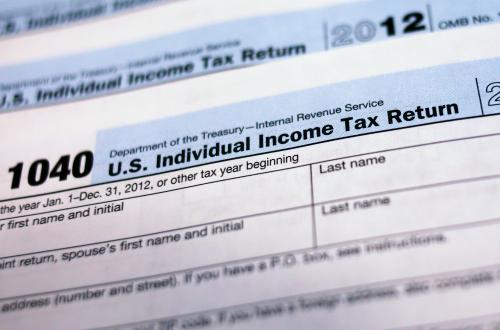Almost one year ago, President Trump signed into law the Tax Cuts and Jobs Act (TCJA), the biggest tax overhaul in the United States in over 30 years. While the law improved the revenue code in some ways, it falls short on three key dimensions – economic growth, fiscal sustainability, and distributional effects.
Among its many changes, TCJA cut the corporate rate tax from 35 percent to 21 percent, redesigned international tax rules, and created a deduction for non-corporate (“pass-through”) business income. It repealed personal exemptions, expanded the standard deduction, eliminated the tax on people who do not obtain adequate health insurance, and greatly weakened the estate tax. Most of the corporate provisions are permanent, while most individual income tax and estate tax provisions (except for health insurance) expire after 2025.
The TCJA will simplify tax filing for those who will now claim the standard deduction instead of itemizing, and some of its corporate tax cuts will create new incentives for investment. Overall, however, the law makes the tax code worse, not better.
Growth: Tax cuts raise long-term growth by improving incentives to work, save, and invest, but the deficits they create will offset some or all of those gains. Most studies indicate that the long-term impact on Gross Domestic Product (GDP) – the output produced in the United States – will be modest. The impact on Gross National Product (GNP) – the income that Americans receive – will be even smaller. Because the TCJA will encourage foreigners to invest in the United States, the returns they receive will reduce the amount of income that Americans will keep from their production. As a result, Americans will receive no increase in net income in 2028 from TCJA. Of course, TCJA stimulated the economy over its first year, but almost any tax cut that put money in people’s pockets would do that.
Fiscal effects: The CBO estimates that TCJA will increase deficits by $1.9 trillion through 2028, even after incorporating the impact of the new law on the economy. If lawmakers make the temporary provisions of TCJA permanent, the long-term effects will be even more dire.
Distributional Effects: TCJA gave most of its benefits to the wealthy and thus increased the inequality of income, which had already been growing for the past four decades. Tax Policy Center (TPC) estimates show that TCJA increased after-tax income in 2018 by 0.4 percent for households in the lowest quintile, compared with 2.9 percent for those in the top quintile, and even more for the top few percent of households.
About 80 percent of taxpayers did receive a direct tax cut from TCJA, but that is not the end of the story. Tax cuts eventually have to be paid for. When Donald Trump said he was giving Americans a tax cut for Christmas, for example, he neglected to add that they (or their children) eventually would receive the bill. It is unclear how TCJA will eventually be financed, but in the most likely scenarios, most households will end up worse off than had the TCJA never passed. In short, TCJA likely made the current generation of high-income households better off at the expense of lower-income households and future generations.
While the law improved the revenue code in some ways, it falls short on three key dimensions – economic growth, fiscal sustainability, and distributional effects.
A few other features of TCJA are worth noting. First, Congress passed the TCJA at a time when the United States had recovered from the Great Recession. Tax cuts are most useful when they stimulate the economy during times of recession. At a time of full employment and strong corporate profits, however, Congress should have increased taxes to address the long-term fiscal shortfall, not cut them. Second, the new pass-through business deduction and international rules were hastily constructed and create complexity, socially wasteful tax avoidance behavior, and uncertainty. Third, the law will raise the cost of health insurance and reduce coverage.
The future of TCJA remains uncertain. Nearly all of its individual tax changes will expire between now and 2026. Other provisions, such as its pass-through rules and many of the international provisions, may not stand the test of time. What is clear, though, is that TCJA took tax and fiscal policy in the wrong direction.
Gale is codirector of the Urban-Brookings Tax Policy Center and the author of Fiscal Therapy: Curing America’s Debt Addiction and Investing in the Future (Oxford 2019)
The Brookings Institution is committed to quality, independence, and impact.
We are supported by a diverse array of funders. In line with our values and policies, each Brookings publication represents the sole views of its author(s).






Commentary
(Not so) Happy birthday to the Tax Cuts and Jobs Act
December 18, 2018